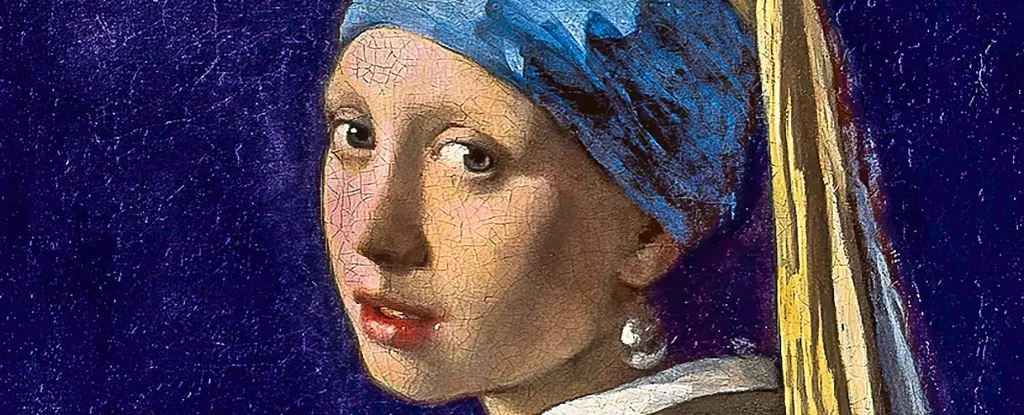The timeless elegance and intrigue captured in Johannes Vermeer’s “Girl With a Pearl Earring” have long fascinated audiences worldwide. This 17th-century painting exemplifies the intricate artistry of its creator while simultaneously raising compelling questions about the psychological and neurological responses it elicits from viewers. Recent scientific studies shed light on the unique attributes that contribute to this masterpiece’s status as one of the most revered paintings in history.
To explore why “Girl With a Pearl Earring” captures the attention of viewers more effectively than most artworks, the Mauritshuis museum in The Hague enlisted neuroscientists to conduct groundbreaking research. Utilizing EEG and MRI technology, researchers monitored the brain responses of individuals as they engaged with this iconic piece alongside various other renowned artworks. Their research revealed what they termed a “Sustained Attentional Loop,” a fascinating neurological phenomenon where viewers are drawn in by specific focal points within the painting. The girl’s eye, mouth, and the shimmering pearl act as visual anchors, stimulating an almost hypnotic cycle of focus that encourages prolonged viewing.
This cyclical gaze not only enriches the viewer’s experience but also contributes to a compelling psychological reward. Each shift of attention between these elements creates a heightened sense of engagement, leading the viewer to experience an emotional connection that is notably stronger than with other paintings. Martin de Munnik, a representative from the research company Neurensics, articulated this point vividly, stating that the painting compels viewers to appreciate its beauty almost involuntarily.
The intrigue does not solely reside in the rich visual tapestry of the painting but also in the neurological response it provokes. The study indicated that the precuneus—a region of the brain associated with consciousness and self-identity—was significantly activated during the viewing experience. This suggests that “Girl With a Pearl Earring” elicits personal introspection and contemplation, enabling viewers to connect their sense of self with the artwork.
Moreover, while engaging with the original piece, the emotional response was documented to be ten times more potent compared to viewing reproductions. This finding highlights an essential aspect of art appreciation: the power embedded in original works. Mauritshuis Director Martine Gosselink emphasized the critical need for individuals to engage directly with original art forms, stating that such experiences are crucial for intellectual stimulation and cognitive development.
Vermeer’s distinct style often features a singular focal point amidst softer, blurred details, which draws attention to the subjects of his works. However, “Girl With a Pearl Earring” diverges from this technique by incorporating three focal points: the gaze of the girl, her slightly parted lips, and the lustrous pearl dangling from her ear. This triad captivates attention in ways that other Vermeer paintings may not achieve, as viewers encounter a subject who appears to engage directly with them—an unusual and striking departure from Vermeer’s typical portrayal of individuals engaged in domestic activities.
This portrayal encourages an active engagement from the audience, establishing not just an observation but an interaction. The girl’s enigmatic expression raises questions and invites interpretations, deepening the psychological draw for those who stand before her.
The intrigue surrounding “Girl With a Pearl Earring” begs comparisons with monumental works like Leonardo da Vinci’s “Mona Lisa.” Gosselink humorously noted the friendly rivalry between these two iconic pieces of art, with some referring to Vermeer’s masterpiece as the “Mona Lisa of the North.” This cultural discourse reflects broader themes within the art world, where different works vie for the attention and admiration of art lovers and scholars alike.
As researchers continue to probe the neurological responses to art, future investigations may unfold deeper insights about the impact of various masterpieces on the human psyche. Such studies not only validate the integral role of art in culture but also indicate avenues where science and artistry can synergistically illuminate the human experience. Vermeer’s captivating “Girl With a Pearl Earring” serves not only as an aesthetic marvel but also as a cornerstone for understanding the profound effects of visual art on the brain and emotions.


Leave a Reply